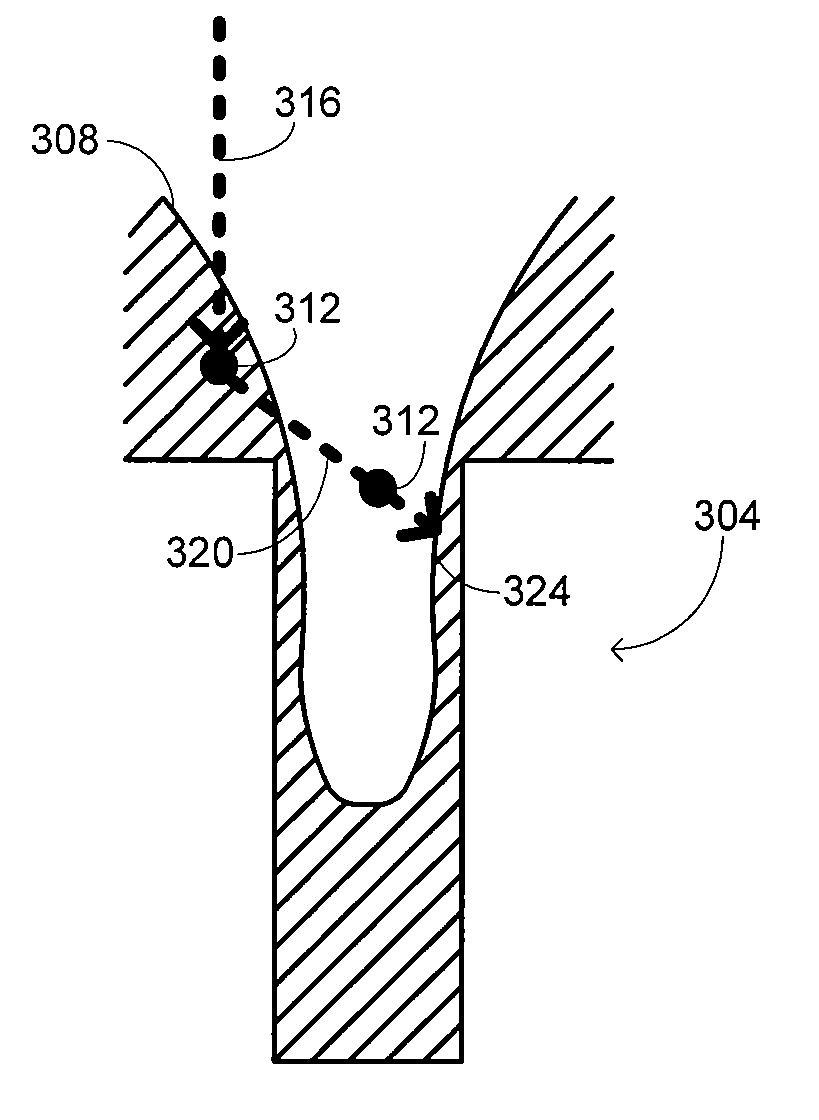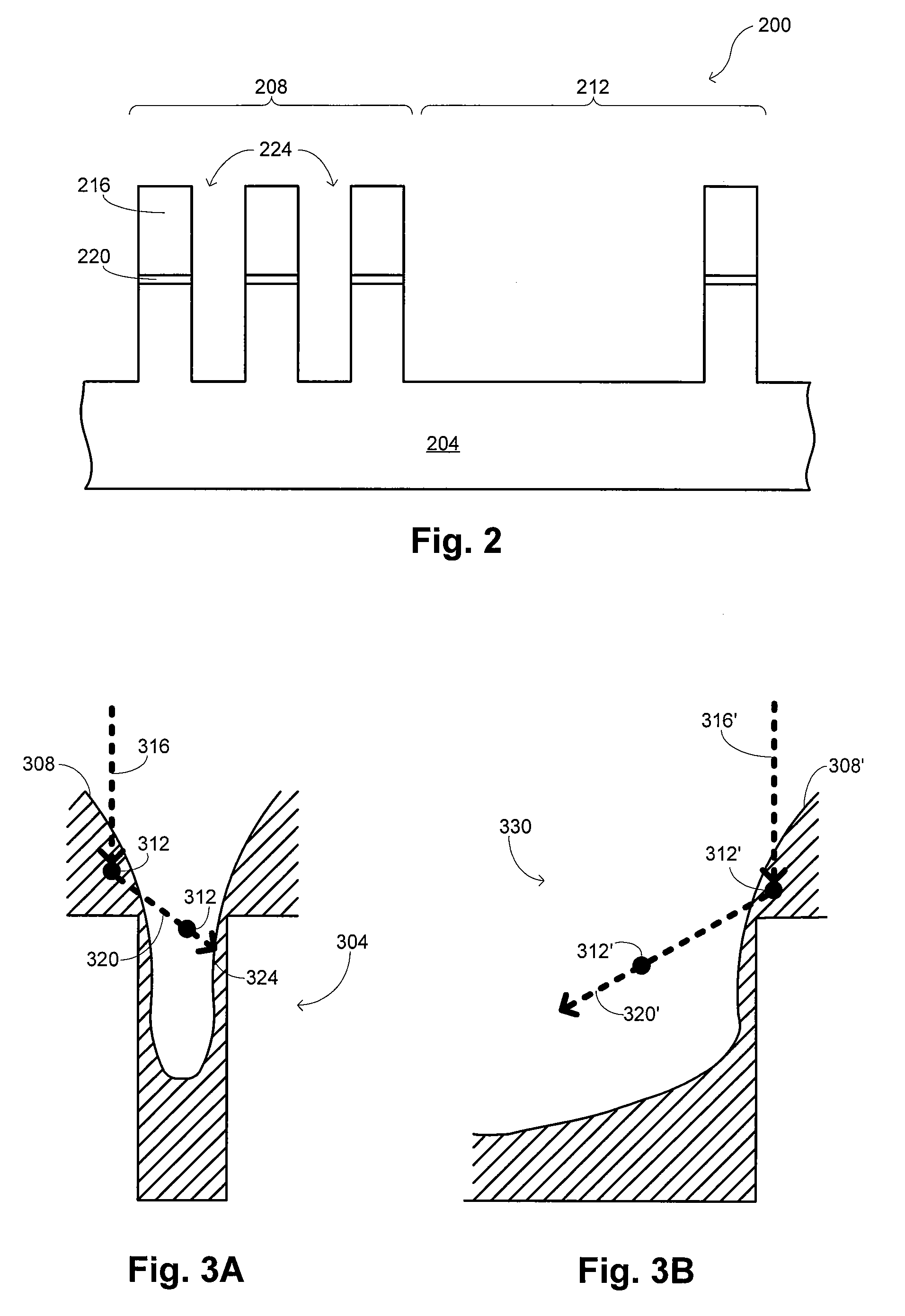Gapfill extension of hdp-cvd integrated process modulation sio2 process
a technology of integrated process and process, applied in the direction of coating, chemical vapor deposition coating, metallic material coating process, etc., can solve the problems of increasing the aspect ratio, progressively more difficult to fill gaps without leaving voids, and reducing the width of gaps
- Summary
- Abstract
- Description
- Claims
- Application Information
AI Technical Summary
Benefits of technology
Problems solved by technology
Method used
Image
Examples
Embodiment Construction
[0020]Embodiments of the invention are directed to methods of depositing a silicon oxide layer to fill a gap in a surface of a substrate using a high-density-plasma CVD process. Silicon oxide films deposited according to the techniques of the invention have excellent gapfill capabilities and are able to fill gaps encountered in, for example, shallow-trench-isolation (“STI”) structures. Films deposited by the methods of the invention are thus suitable for use in the fabrication of a variety of integrated circuits, including those that have a feature size on the order of or less than 45 nm.
[0021]The types of structures that may be filled according to embodiments of the invention are illustrated by FIG. 2, which provides a simplified cross-sectional view of a partially completed integrated circuit 200. This integrated circuit is formed over a substrate 204 that includes a plurality of STI structures, each of which is typically created by forming a thin pad oxide layer 220 over the surf...
PUM
| Property | Measurement | Unit |
|---|---|---|
| feature size | aaaaa | aaaaa |
| temperature | aaaaa | aaaaa |
| temperature | aaaaa | aaaaa |
Abstract
Description
Claims
Application Information
 Login to View More
Login to View More - R&D
- Intellectual Property
- Life Sciences
- Materials
- Tech Scout
- Unparalleled Data Quality
- Higher Quality Content
- 60% Fewer Hallucinations
Browse by: Latest US Patents, China's latest patents, Technical Efficacy Thesaurus, Application Domain, Technology Topic, Popular Technical Reports.
© 2025 PatSnap. All rights reserved.Legal|Privacy policy|Modern Slavery Act Transparency Statement|Sitemap|About US| Contact US: help@patsnap.com



